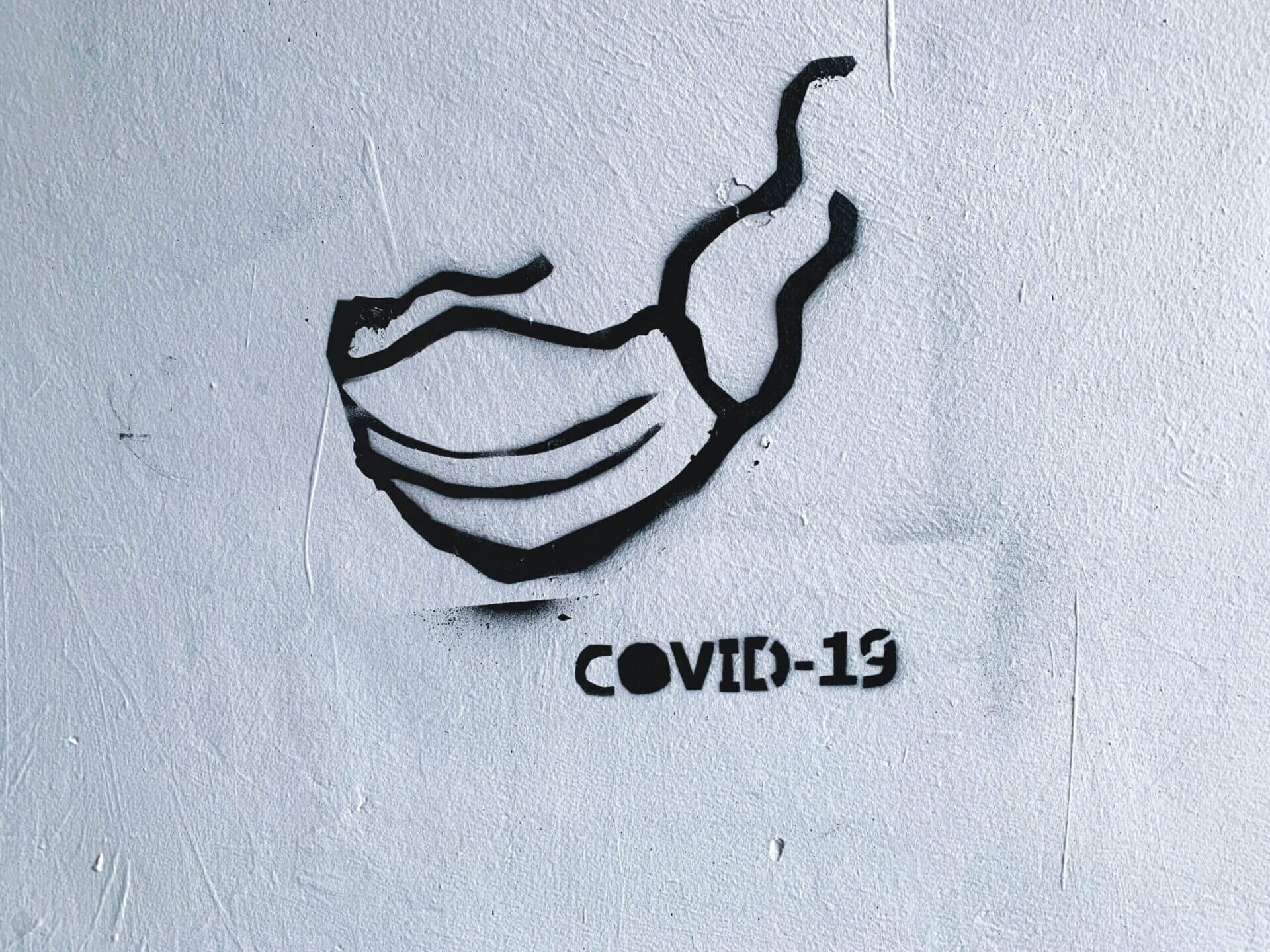The COVID-19 Pandemic has affected pretty much every aspect of our lives, leadership included. Leaders recognize that agility, creatively leading, and flexibility are no longer “nice-to-haves” but are essential to employee morale, business operations, and maintaining a healthy work-life balance.
Curious to gain a better understanding of how leadership has been affected over the last two years, we dived into our data. We analyzed Leadership Circle Profile (LCP) Reports from 2019, 2020, and 2021 to see how COVID has influenced leadership. What follows are the most relevant findings from that research.
Analysis of 13,536 leader profiles from:
- 138 countries (32% from the United States)
- 61 industries
- 1,172 companies
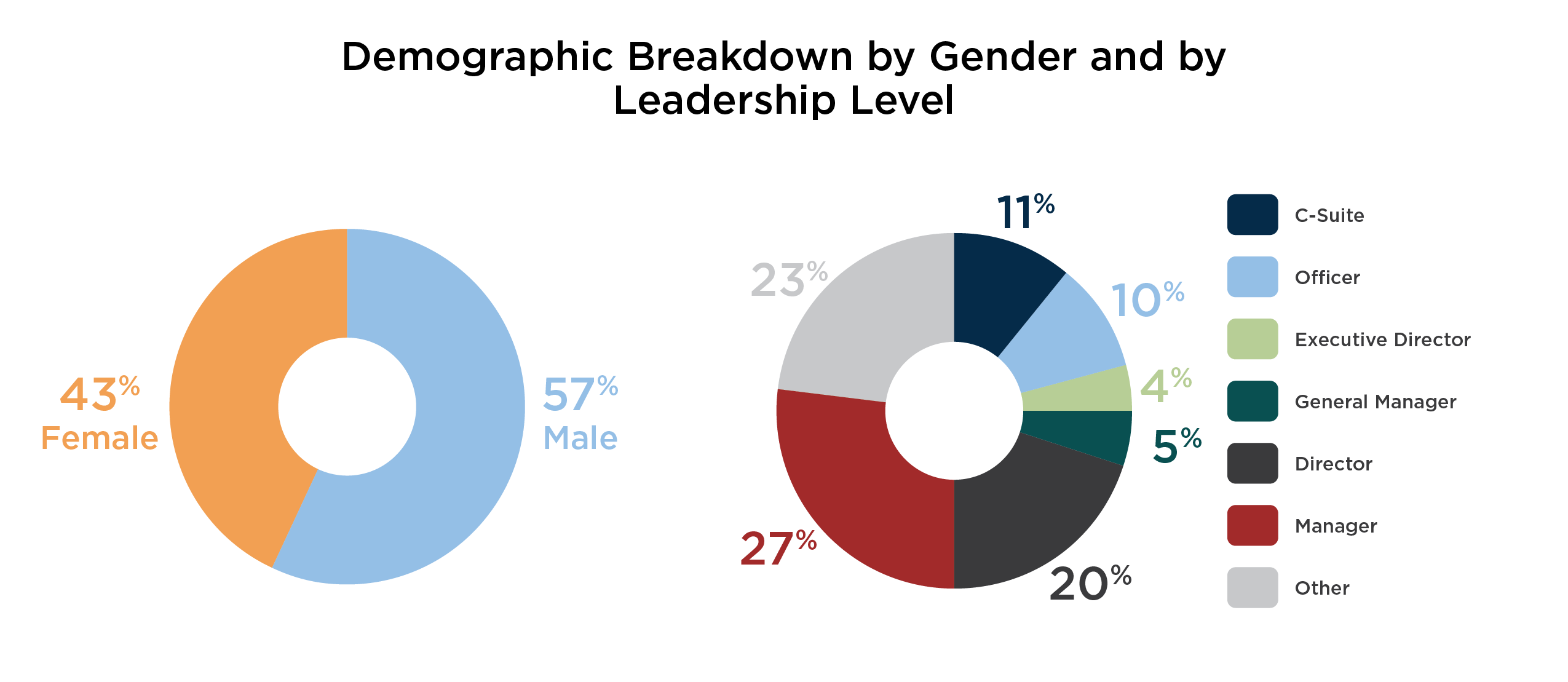
Along with our research into leaders’ profiles, we conducted an in-depth survey of randomly selected leaders in the US and asked them the following:
- In what ways has managing during COVID changed your leadership approach?
- What has been the most significant learning about your leadership due to managing during COVID?
- What leadership advice would you give others based on your experience managing during COVID?
Here is what we discovered:
Many of us have experienced the initial shock of going from an in-office setting to working from home and feeling siloed from co-workers. Keeping up with constant emails, instant messaging, and conference calls–not to mention our personal lives–made it hard to manage workloads. Leaders found themselves longing for more connection and organization during the new reality they were facing.
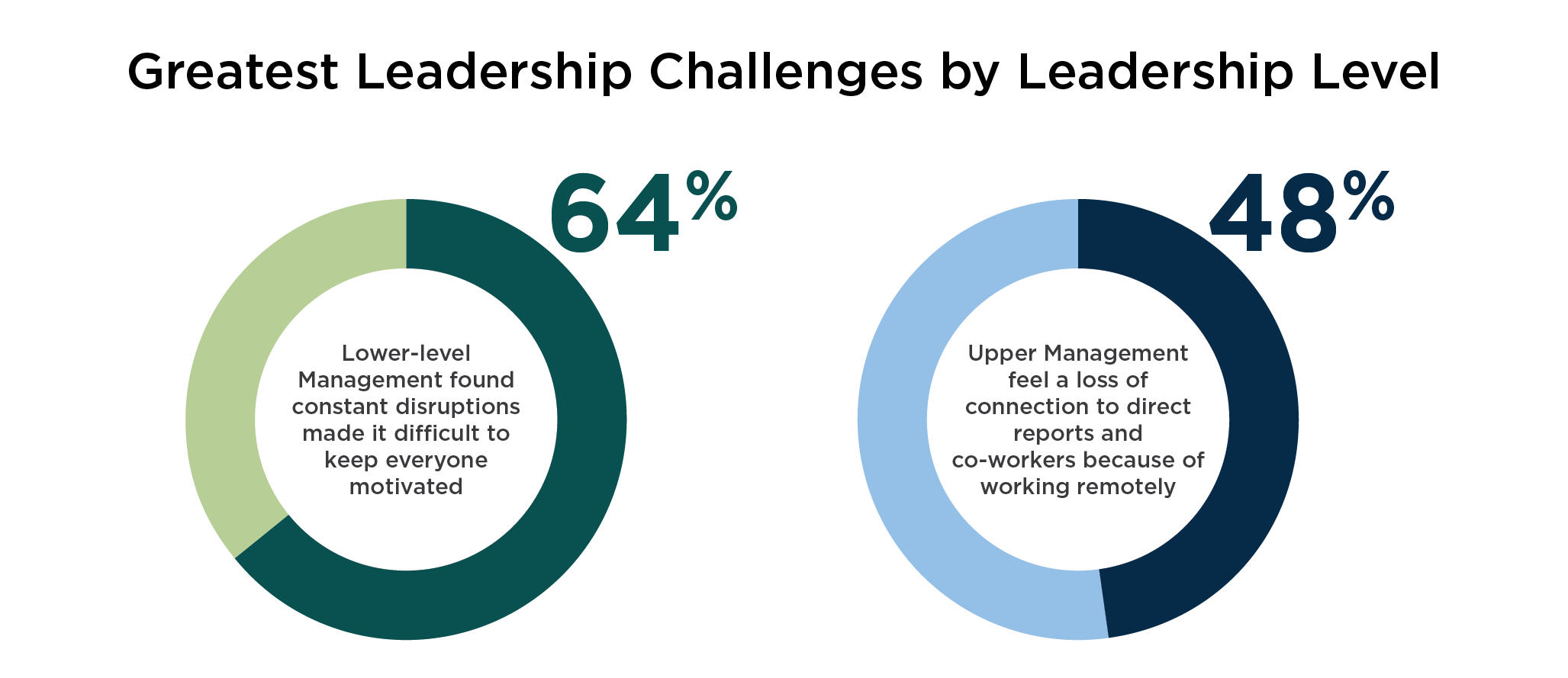
Lower levels of management were predominately challenged by the constant disruptions that increased the difficulties in motivating their teams, whereas the greatest challenge for senior managers revolved around the loss of connection with Direct Reports. All management levels felt challenged by the increased demands on their leadership capacity.
Another challenge leaders faced while managing COVID was that disruptive change has made it difficult to keep everyone motivated and focused on the long-term. We found that leaders were more likely to increase their complying tendencies due to lack of connection, causing them to either pull back and increase distance, or take complete control of the work.
Leaders were less likely to focus on leadership assessment during the peak of COVID in 2020, but there was a significant increase in leadership assessment during in 2021. This may be due to leaders recognizing that they need more information on their leadership after dealing with something as significant as COVID.
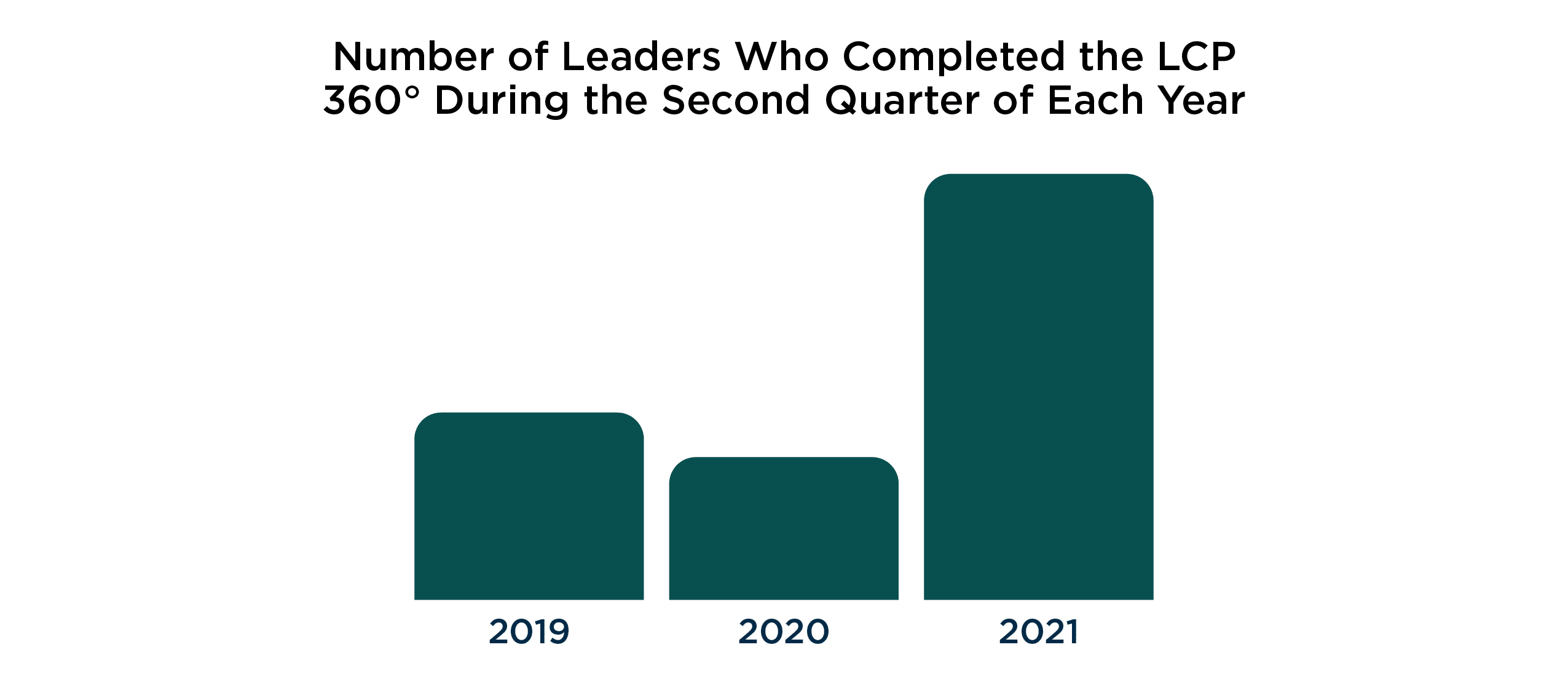
Our analysis of the yearly LCP data also shows an increase in Creative leadership in the midst of COVID and a decrease in Reactive leadership. These findings run counter to the narrative we’ve seen frequently of leaders wilting under the pressures of COVID. Of course, that’s happened in individual cases, but overall, we see that leaders have risen to the challenges COVID has presented. How encouraging!
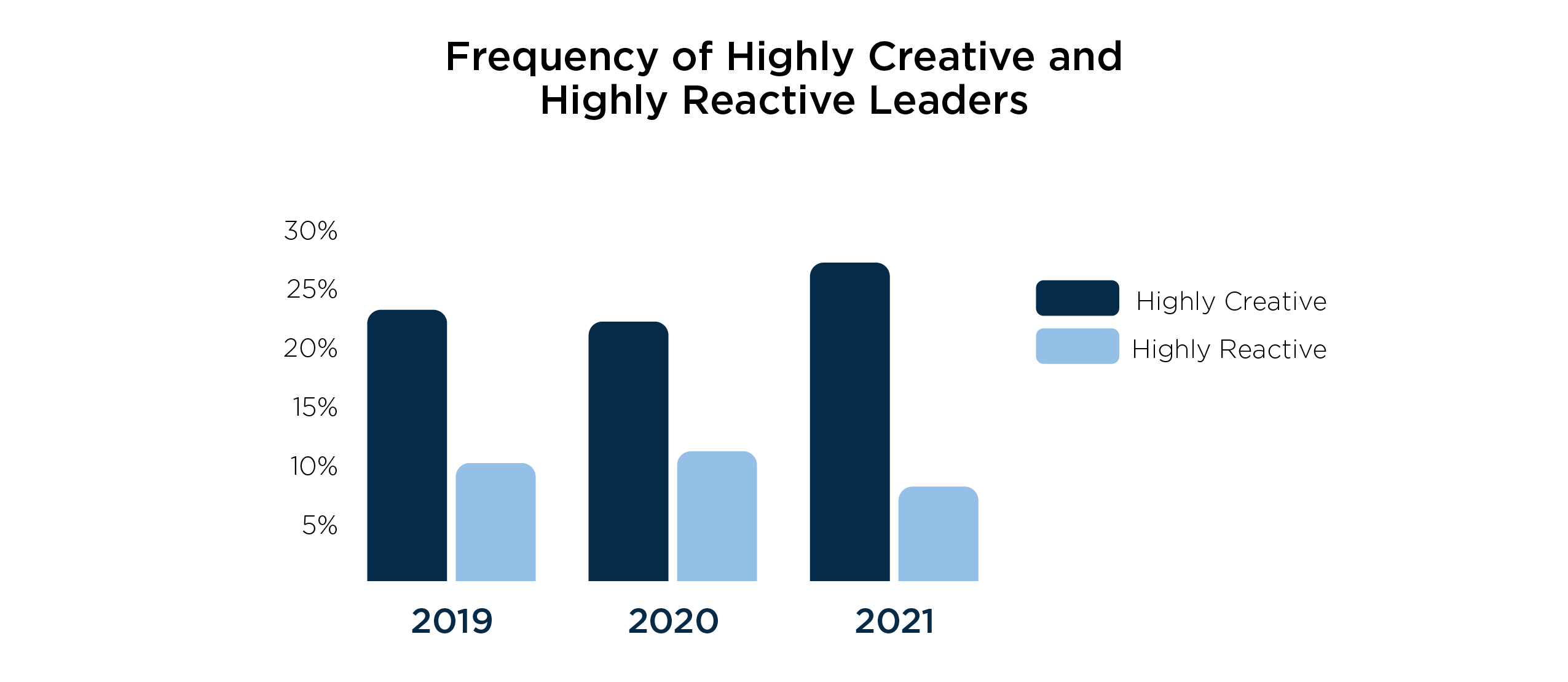
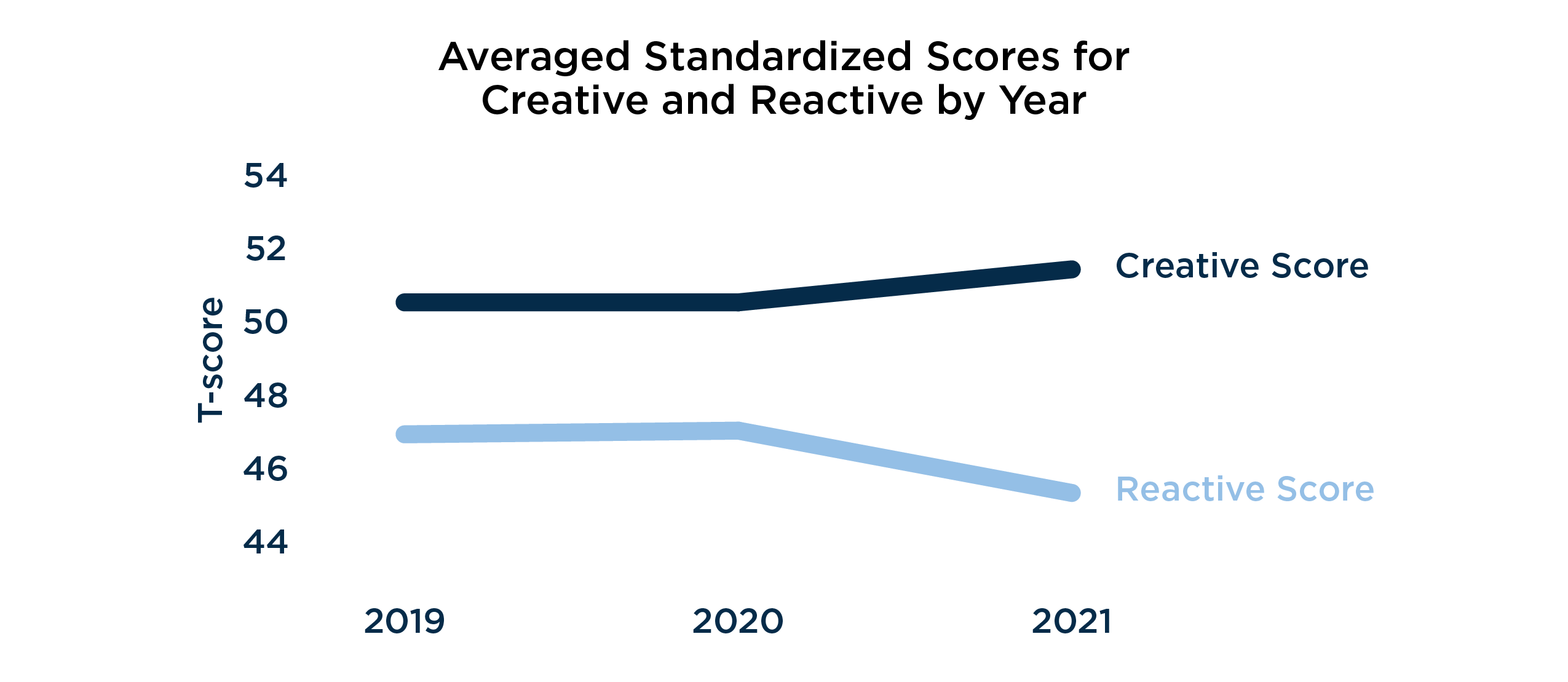
As leaders have leaned into developing Creative leadership in this volatile new world, they’ve found that adapting, communicating, and adjusting are key to sustainable success and growth.
75% of leaders said adaptability and flexibility were essential to their success
69% of leaders stated that strong communication skills were a strength during these times
50% of leaders said composure allowed for the adjustment to be smooth
Effective leadership is a muscle to be trained and developed. When we asked what changes in leadership approach leaders were striving for over the past two years, it varied by management level.
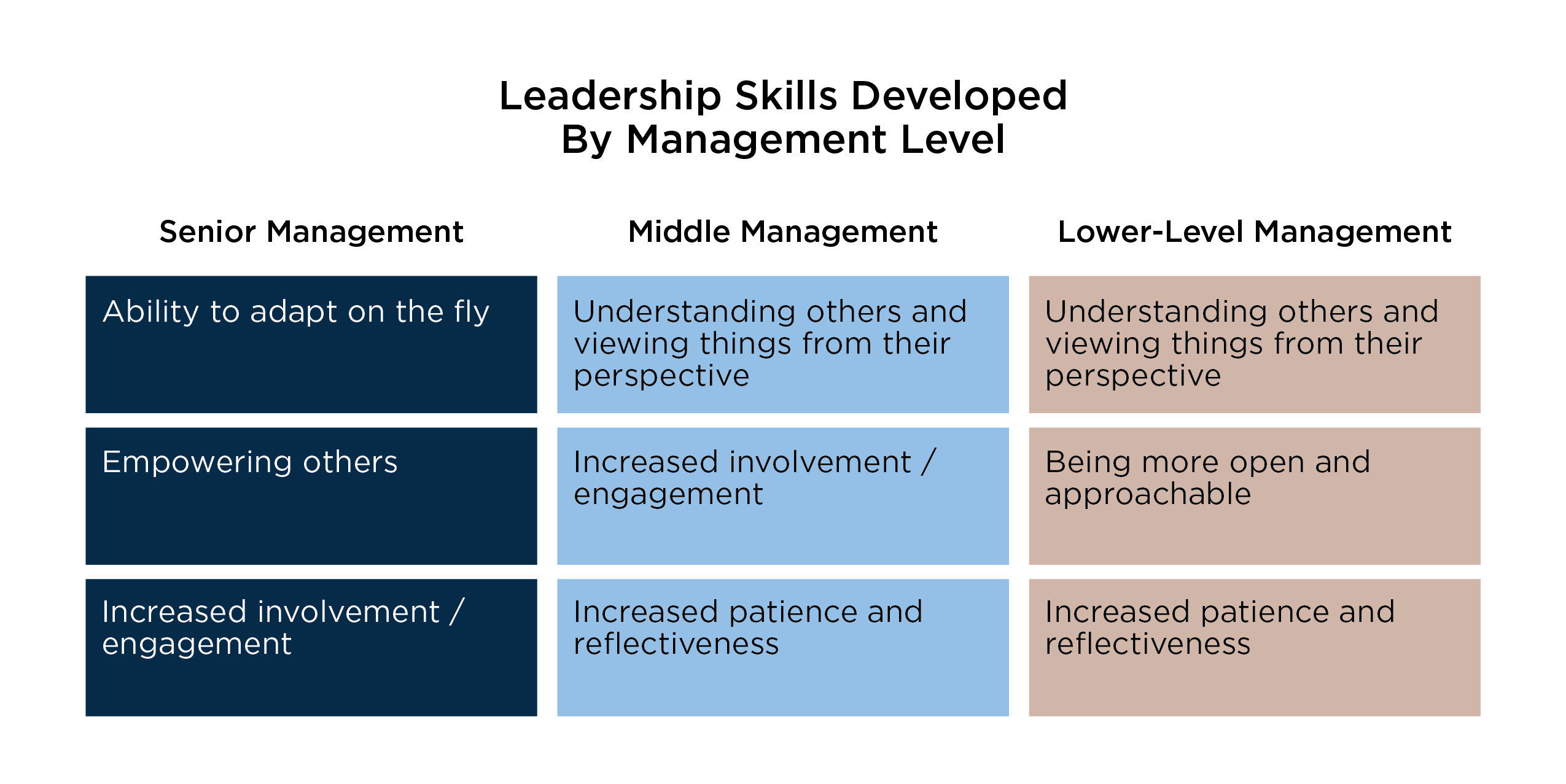
What are leaders learning about themselves? Here are the top 3 lessons learned while managing during COVID:
28
25
18
Based on these learnings, here are the things leaders felt they have most improved on during the pandemic:
97% of leaders reported that their leadership had improved as a result of leading during COVID
60% of leaders have an increased the desire to improve own leadership
24% of leaders became kinder / gentler toward co-workers
45% of leaders emphasized the need to build stronger relationships
33% of leaders increased their patience and became more forgiving of mistakes
28% of leaders relinquished control and let others share in leadership and decision making
Direct COVID Impact
Based on feedback about management challenges and emerging strengths tied directly to COVID
The most frequently cited challenges leaders faced in managing COVID include loss of connection, disruptive change, eroded trust, and becoming overloaded. Here are a few of the comments from leaders we found particularly interesting:
The most frequently cited strengths leaders developed and relied on to manage during COVID include transparent communication, composure, adaptability, honesty and vulnerability, encouragement of creativity and innovation, and willingness to take action. Here are a few of the comments from leaders that stood out to us:
The biggest learnings revolve around the need to remain flexible, adapt as necessary to circumstances, and actively engage with others, asking questions and empathizing with what others are going through.
Although COVID has presented many challenges, it has also provided an opportunity for leadership to be developed and for leaders to step up to the challenge … and many have!
Want to learn about how you perceive yourself as a leader? Take the Free Self Assessment.

